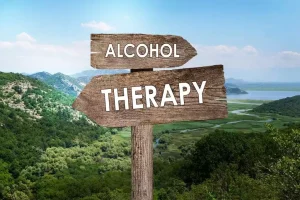
Design for Recovery provides structured sober living in Los Angeles, California. You might worry that once you agree to live in a long-term mental health facility, you’ll be locked up like a prisoner. However, as long as you don’t pose a risk to yourself or others, you’ll have a lot of independence.
Support Your Recovery
Individuals in sober homes share a common goal of long-term sobriety and wellness. Members of the sober living community support and motivate each other to avoid relapsing into past behaviors. While these factors provide guidance, it’s important to remember that deciding when to leave should not be a decision made in haste or isolation.
- Some recovery houses insist on random drug testing to ensure residents remain sober.
- Emphasis is placed on equipping the individual for the next phase of recovery, be that another residential level, or independent living.
- David Lawrence’s proposal says recovery residences are widely used to promote a healthy living environment for people in recovery.
- So you learned that you need more time after leaving rehab to work on resistance skills and believe that a sober living home can give you the benefit of several months in a drug-free environment with peer support.
What Are the Requirements to Get Into a Sober-Living Home?
Additionally, many sober living homes have resident councils, which help govern daily life, enforce house rules, and offer peer support. Other sober living homes are more like boarding houses, except that there are strict abstinence requirements, and residents do not get the final say about rule-making. Most sober living facilities do not have a definitive cut-off time for residents, allowing for flexibility based on individual needs. The primary focus is to afford residents enough time to develop robust support systems and effective coping strategies for dealing with triggers in the real world.
- Burgess, the CEO of David Lawrence, said in his statement the center is committed to providing lifesaving and life-changing care to those seeking support for substance use challenges.
- Meetings were held both in the home and in neighboring organizations in the community.
- The length of stay in these recovery facilities is quite variable and depends on the person.
Addiction Treatment Programs

Burgess, the CEO of David Lawrence, said in his statement the center is committed to providing lifesaving and life-changing care to those seeking support for substance use challenges. Halfway houses, like other recovery and sober-living houses, are intended to gently reintroduce tenants back into society, free from the pressures and triggers of a potentially dangerous home environment. Finally, a transitional housing center with a sobriety requirement could be of great help if you’re struggling with housing insecurity, mainly due to addiction struggles. Residential clients in our adult and adolescent programs may not leave campus or receive off-campus passes. Skyland Trail South residential campus includes 24 units, each with a private bedroom and bathroom. The American Addiction Centers suggest that many residents stay anywhere from several months to a year.
Support for Me and My Family
So you learned that you need more time after leaving rehab to work on resistance skills and believe that a sober living home can give you the benefit of several months in a drug-free environment with peer support. Residential treatment offers high-quality, long-term mental health care within a structured, homelike setting that contributes to healing and a sense of community. In fact, residential care offers adults with mental illness a number of advantages over other mental health treatment settings. Through group therapy and recreational therapies, long-term mental health care lets you build a community of people who are on a journey similar to yours. These people form a supportive social system that helps you maintain healthy habits even after you leave the facility.

Should You Go to a Sober Living House?
Rizzo said buffers or walls will not stop any of the recovery residents who may relapse or suffer a mental health event from walking around the neighborhood where children live or to a school bus stop in the area. If you are in drug rehab right now or entering it through FHE Health, your goal should be to focus on your current needs. From there, what is a recovery residence our team will work with you to choose the right type of transitional living for your next step. If you are able to be a part of a recovery residence, it will be important to understand what type of environment is present. If someone is unable to work initially, due to a lack of experience, there may be some help in building skills to do so.
Halfway Houses: A Stepping Stone to Independent Living
All sober houses have a zero-tolerance policy regarding the use of drugs or alcohol. Some recovery houses insist on random drug testing to ensure residents remain sober. Individuals who breach this are usually removed from the home immediately to protect the other residents. These may include financial constraints, adherence to house rules, and occasional conflicts with other residents. Effective communication and engagement in a supportive environment can help overcome these. People between 21 and 65 may qualify for long-term care under their state’s mental health program.
- A facility’s accreditation, specialised programms, staff credentials, family engagement, and holistic approaches should all be carefully considered before making your decision.
- An individual who has numerous rule violations can expect to have a short stay in a recovery residence as their behavior threatens the sobriety of the other residents in the facility.
- While a sober living house doesn’t offer individual or group counseling, it offers structure and support to help you maintain your sobriety.
Our Facilities

Our Continuum of Care

